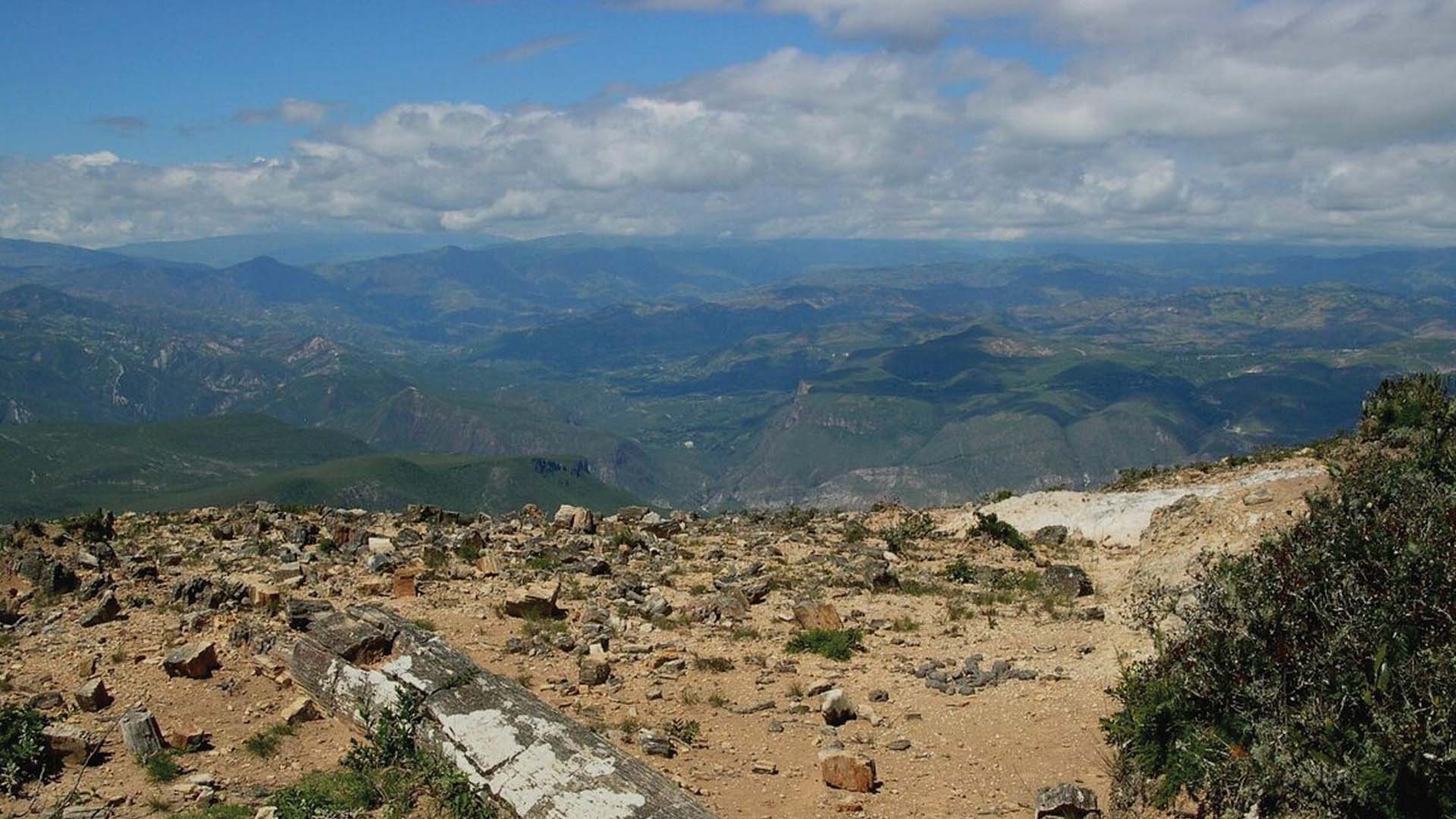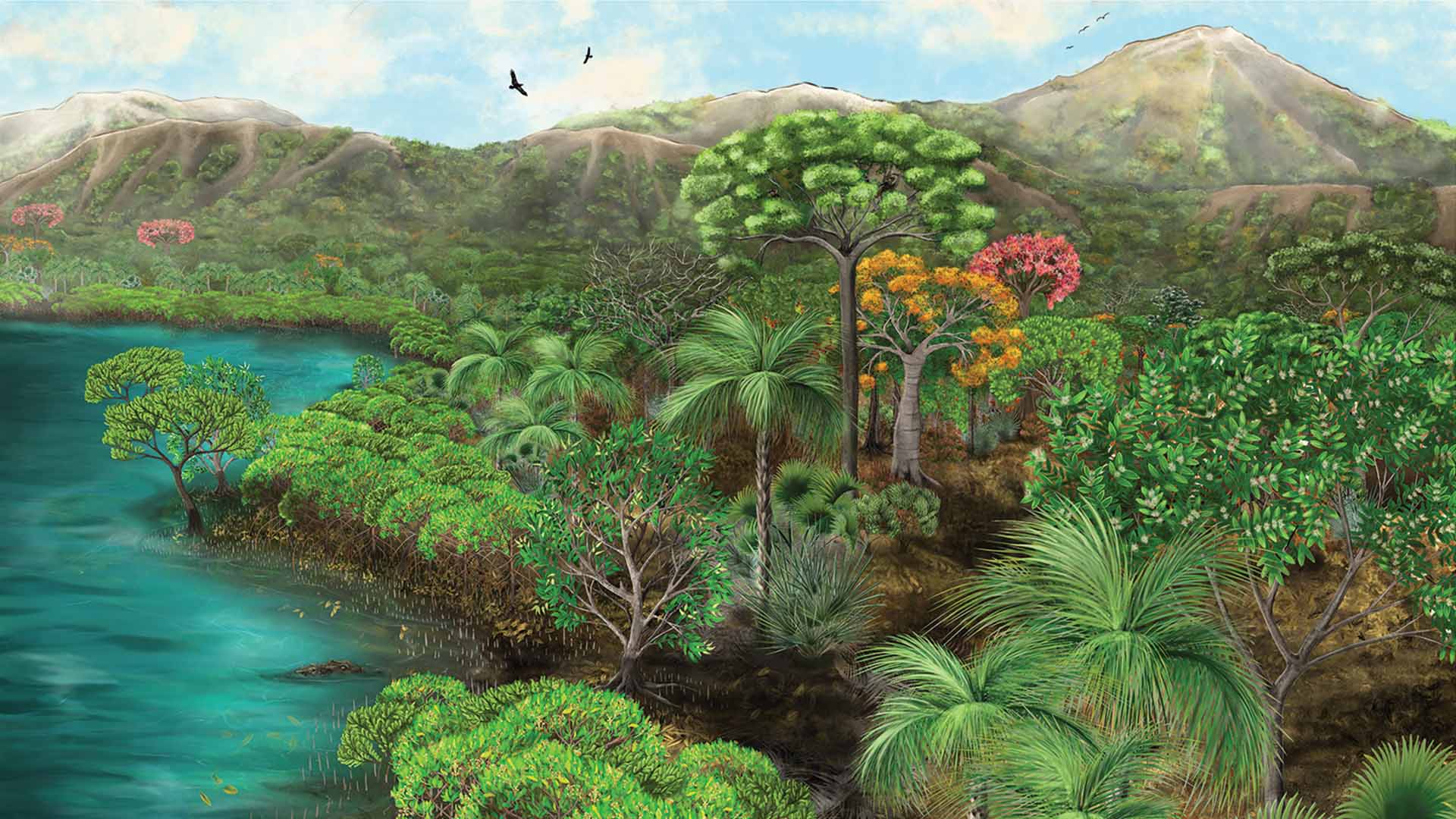Outside of a tiny village in Peru is El Bosque Petrificado Piedra Chamana (The Petrified Forest Piedra Chamana). The forest contains an array of fossilized woods and leaves buried by a volcanic eruption 39 million years ago.
The fossils in Piedra Chamana give us a rare glimpse into the prehistoric landscape of the Eocene, a geologic period that occurred between 34 and 56 million years ago. Because of the volcanic activity, the fossils are preserved and can record important information about climate change. Paleontologists first visited the forest in 1997 but did not know their age or how they were preserved. After dating the rocks and studying the volcanic processes, the story of the Piedra Chamana was pieced together.

Photo Credit: National Parks Service
Thirty-nine million years ago, a volcano erupted in Northern Peru that rained ash onto the forest, stripping leaves from the trees. The ashy material broke off the trees and carried them into a river where they were buried and preserved. Millions of years later, the Andes Mountains rose, carrying the fossilized trees with them. The rocks were exposed to erosion, exposing them to the light which is how we can see them now.
To find out what types of trees were in the Piedra Chamana before the eruption, scientists examined thin samples of the petrified wood under a microscope, allowing them to see the detailed features of the vessels, wood fibers, and living tissue components. They also cut small pieces from the specimens to prepare tiny sections on three different planes to examine with a tiny microscope to give a different view of the tree’s anatomy.
Based on these features, scientists found that many of the fossil trees have close relatives in present-day South America. For example, one has features of the woody vines which are called lianas, and others appear to have been large canopy trees, similar to Ceiba. As for the leaves, they all had smooth edges, indicating that the forest experienced warmer conditions than there is on Earth today.

Photo Credit: National Parks Service
Scientists have known that the Earth has previously been warmer, and the findings in this forest further prove that. However, there is some rise for concern amongst scientists because of the current rising in Earth’s temperature. The Early Eocene era was characterized by high carbon dioxide levels in part caused by increased volcanic activity, like the one that destroyed Piedra Chamana, and other natural disasters like forest fires. In this period, there were no ice caps, and palm trees and crocodiles lived above the Arctic Circle.
Research indicates the Earth is along a trajectory to a climate state that could be similar to this Eocene period. Researchers ascertain that it is unlikely that climate sensitivity will reach Eocene levels in our lifetime. However, many climate scientists believe that if nothing is done to limit carbon emissions from the burning of fossil fuels, studies show that CO2 levels could reach 100 parts per million by the year 2100, the same level as the Eocene period. The effects this would have on Earth (and forests) are unimaginable.
To discover more about innovations in forestry, stream Tomorrow World Today’s “Pipe Dreams” on SCIGo and Discovery GO!




